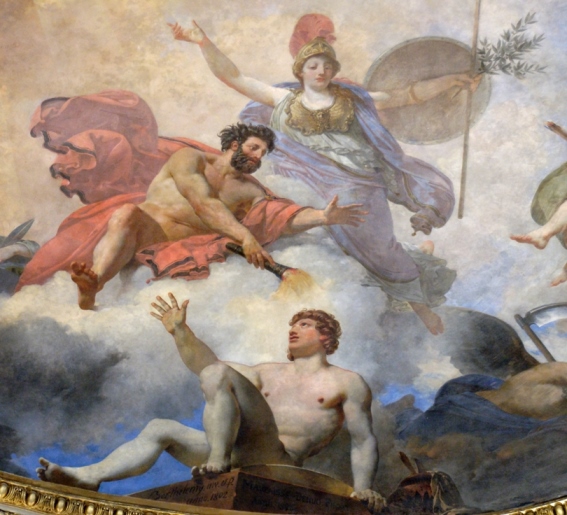 The only known ballet by Ludwig van Beethoven is to be re-staged after 215 years. Musica Florea and the Hartig Ensemble present the work Die Geschöpfe des Prometheus, Op. 43 as a ballet entitled Prométheovi lidé aneb Moc hudby a tance. The premiere will take place on 2 July 2016 at the chateau theatre in Valtice.
The only known ballet by Ludwig van Beethoven is to be re-staged after 215 years. Musica Florea and the Hartig Ensemble present the work Die Geschöpfe des Prometheus, Op. 43 as a ballet entitled Prométheovi lidé aneb Moc hudby a tance. The premiere will take place on 2 July 2016 at the chateau theatre in Valtice.Ludwig van Beethoven is generally known as the author of nine symphonies and famous piano concerts and sonatas. As for his theatre works, only one opera (Fidelio) and one ballet have been preserved – the ballet will now be shown to the Czech audience for the very first time, in its closest-to-the-original version. The Musica Florea orchestra and the dancers of the Hartig Ensemble will revive the ballet and try to be as faithful to the period of its creation as possible. The musical reconstruction is supervised by Marek Štryncl, conductor and Artistic Director of Musica Florea; Helena Kazárová – lecturer at AMU (Academy of Performing Arts in Prague) - is in charge of the choreography and direction of the piece. Besides the permanent members of the Hartig Ensemble – Dances and Ballets of Three Centuries, several soloists have been invited to collaborate on the ballet (Jaime Reid - Béjart Ballet Lausanne, Jiří Jelínek, Václav Janeček and others).
Concerning the genesis of the new staging of the ballet, the choreographer Helena Kazárová says:” The idea of bringing this piece on stage and keeping its content and aesthetics as close to the original version as possible has been growing in my head for a long time. Once, about fourteen years ago, I met the conductor Marek Štryncl in front of HAMU and I asked him if it was possible to play Beethoven in the period style. And he was excited about the idea. At that time I didn’t dare to choreograph such an opus, I was too inexperienced. I wanted Pavel Šmok to do it. I wrote the scenario and had a meeting with him. But later it was impossible to develop the concept because of Pavel Šmok’s poor health. Earlier this year, this Master of the Terpsichora gilt left us and is now dancing in heaven. I would love to dedicate our ballet to him, out of great respect for his artistry.”
The listeners/spectators will have the opportunity to experience Beethoven’s work in a new context. “Beethoven’s ballet music is rarely performed at concerts”, adds Marek Štryncl, “Everybody feels that it must be completed by something very important – the dance element. The great thing about this music is that it does not only ‘accompany’ the dance. Its effect will be intensified by the use of period expressive tools and also period instruments. And that makes the production innovative.” The direction, too, is innovative. This ballet of Beethoven’s has been staged in the National Theatre three times during the 20th century, but never with the attempt at reconstructing the original libretto and thus creating a historically informed performance.
Die Geschöpfe des Prometheus, Op. 43 was premiered on 28 March 1801 in Burgtheater, Vienna, and it was choreographed by the Italian Salvator Viganò, who belonged to the most admired men in the Europe of that time. Beethoven worked with his Italian libretto which has not been discovered yet and is therefore considered as lost. The new staging is based on the research of the original resources and Beethoven studies. This ballet was Beethoven’s first great theatre piece and became one of his first public triumphs – during the 1801/1802 season it was performed almost thirty times.
Next performance will be held on 12 September 2016 on the summer stage of the Liechtenstein Palace at HAMU.
Source: Musica Florea



Josef Bartos
Thank you for your thoughts. One got stuck in my mind – that passion makes us different from AI. Just yesterday I read…I am a dance critic. I am a member of an endangered species